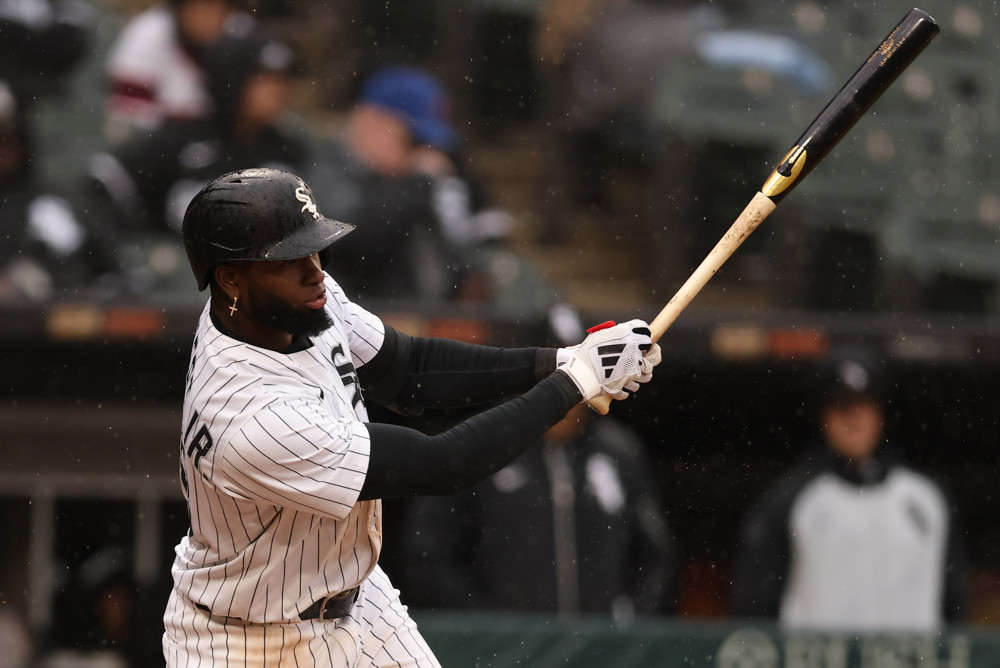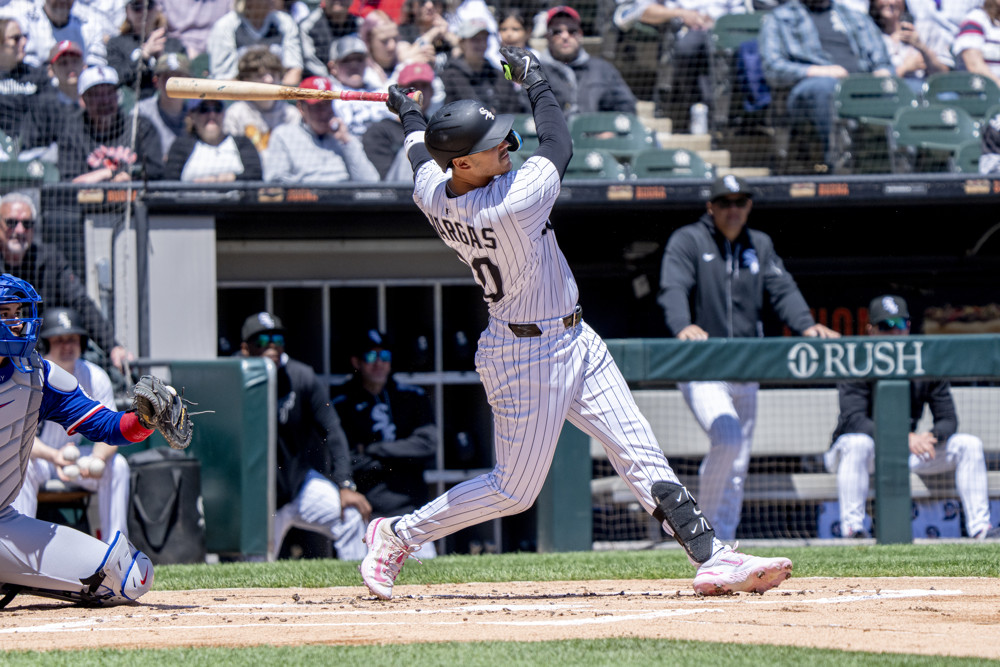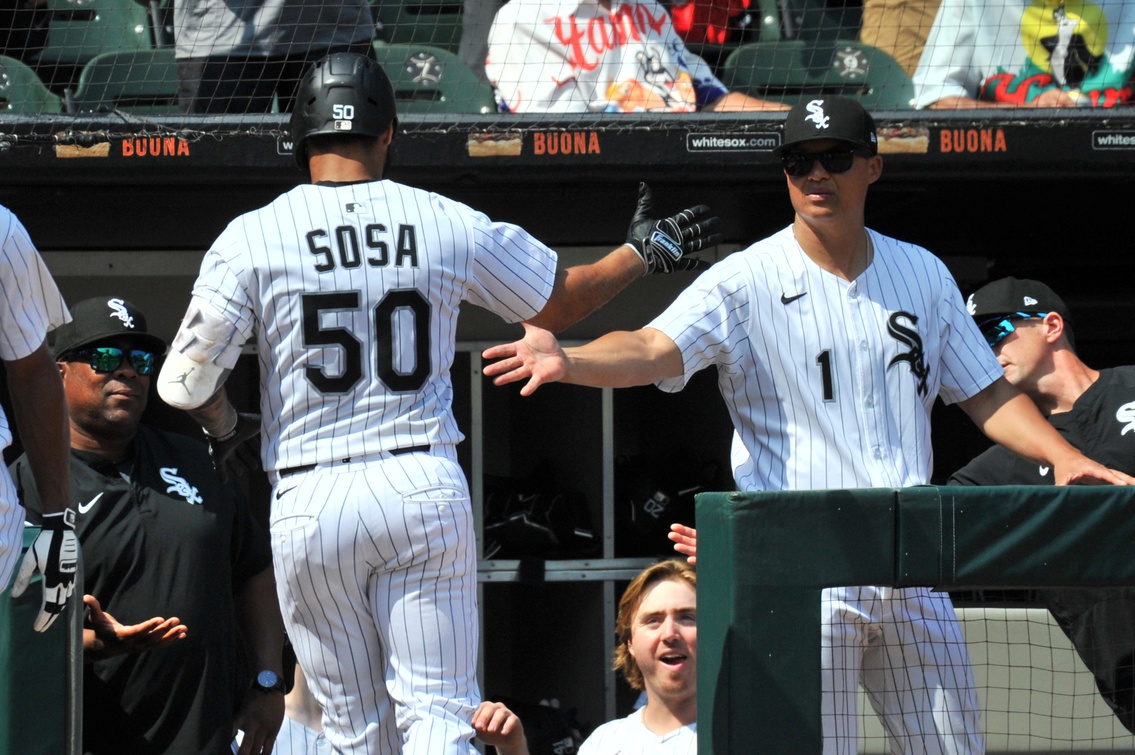Not to put it in too dire of terms, but the All-Star break is nearing, and Luis Robert is hitting .209/.276/.352 since the start of last season, which spans 716 plate appearances. The trade offers Chris Getz receives for Robert will reflect the new reality that has set in.
Robert has hit the ball harder over that span (90 mph average exit velocity) than those numbers might suggest, but also struck out 32.1 percent of the time. For the 2025 season, Statcast says his rate of squaring up the baseball is in the first percentile, which is bad, as opposed to his 94th-percentile bat speed, which is still good.
But conjuring up an argument that Robert is still a good major league hitter, or more specifically, that he is going to start producing results in line with that any day now, is getting increasingly difficult. And after such a long period of time, Robert isn't about to speak with certainty about when these sluggish results will end.
"I can’t predict that," Robert said via interpreter. "I’m working hard every day, trying to get results. But at the end of the day, it’s something I can’t predict."
Robert is coming back from a hamstring injury that's being discussed in a manner that suggests getting a five-day break will be helpful for him. But offered the idea of the break being a "reset" that gets him right at the plate, Robert wasn't entertaining such facile narratives.
"I don’t have anything else to reset," Robert said via interpreter. "Just keep working and if the results aren’t there, keep working."
⚙️⚙️⚙️
Truthfully, it's not quite clear what to make of Colson Montgomery at the plate yet through six games, although it's always better to look unsustainably good through a tiny sample rather than unsustainably bad.
What's notable for someone whose long-term defensive fit was their biggest question mark for many years, is that Montgomery's fielding metrics all immediately went in a positive direction upon his debut; even after his first error on Tuesday night and some less-than-precise feeds at second base. Fielding Run Value has him at +1, Outs Above Average has him at +1, and Defensive Runs Saved even had Montgomery at +4 in short order.
"It just goes with the preparation that we all do, and definitely the preparation of what me and [third base coach Justin Jirschele] do, just from positioning and things like that because you can't just be one-sided in this game," Montgomery said. "I think me and everybody else here, we take a lot of pride in our defense."
While the 6-foot-5 shortstop is clearly a uniquely long body to have at the position, granting him more range than typical, and also touts a plus throwing arm, apparently neither of those big tools are big shapers of how Montgomery plays shortstop. Jirschele said they don't scheme their positioning any differently based on how much ground Montgomery can cover ("We're trying to set ourselves up the most times as possible to where they're going to hit the baseball"), nor do they instruct him to stay back on balls more because he has a hose to fall back upon.
Instead, where Jirschele says Montgomery has seen the most growth defensively is the pre-pitch movements that have been emphasized team-wide.
"He's really comfortable, he's really accurate about his timing and he's consistent with it, and that's just allowing him to get off the ball and continue to play through the ball and downhill," said Jirschele, who ultimately believes that the jumps Montgomery is getting defensively allow him to save his max effort throws for when they're really needed. "Certain plays you feel as an infielder, when you're really working through the ball, I like to call it downhill. You're getting downhill, you're moving through it and your legs carry the throw over."
⚙️⚙️⚙️
Results-wise, Miguel Vargas is staggering into the All-Star break. He's 4-for-30 with a double in July and hasn't homered in his last 20 games played. He's only struck out six times this month and had his share of lineouts, but the percentage of fastballs he gets has dropped since his breakout May, and he has self-critiques for how he's handled it.
"I've been chasing a little bit lately, I feel like," said Vargas, who tries to judge his plate appearances on decision-making more than results. "Sometimes the results aren't what I wanted, but I have to trust in the guy next to me. I remember a couple series ago, I got a walk and Kyle [Teel] had a big double behind me. That's what we're looking for as a team."
But it's not so long ago that Vargas' central mission was adding bulk in the offseason to counter the pronounced loss of weight and strength that he dealt with after the trade last season. As the break nears, Vargas would give himself a passing grade on that front.
"I think I'm doing way better," Vargas said. "I just want to eat all my meals. Sometimes I'm not really consistent with breakfast."
As we are often reminded, and surely Vargas has been told a few times as well at this point, breakfast is the most important meal of the day. But as he points out, the abnormal sleep schedule that can result from many nights at work ending at 11 p.m., or the wrinkle of cross-country travel being mixed in, can throw a wrench in the whole process.
That's where ideally a regular role, and a routine through which Vargas has experienced major league success and trust in what he's doing, all become symbiotic with the 25-year-old staying strong through the end of the year.
"That's the good thing about having a routine," Vargas said. "Every day you know what you do, and that that's how you get better."






